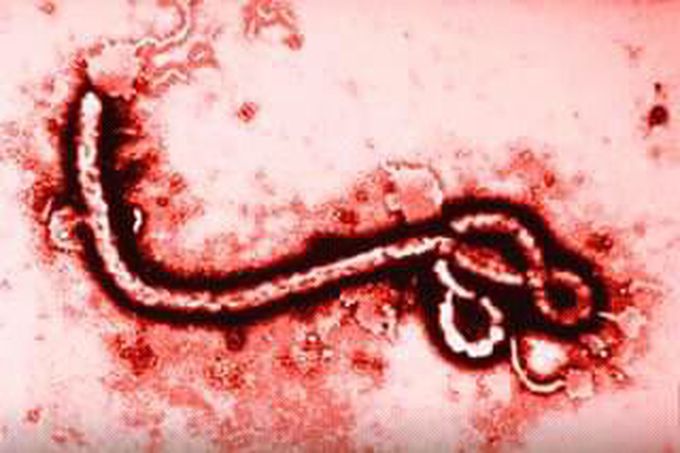

Ebola hemorrhagic fever (Ebola virus disease) facts
Ebola hemorrhagic fever (Ebola virus disease) is a disease caused by four different strains of Ebola virus; these viruses infect humans and nonhuman primates. Compared to most illnesses, Ebola hemorrhagic fever has a relatively short history. Health care professionals discovered Ebola in 1976. There have been several Ebola outbreaks, including the 2014-2016 "unprecedented epidemic" in Africa, which has abated. After an incubation period of two to 21 days, symptoms and signs of Ebola virus disease include abrupt fever, headache, joint pain, muscle aches, sore throat, and weakness. Progression of Ebola symptoms includes diarrhea, vomiting, stomach pain , hiccups, rash, and internal and external bleeding in many patients. Ebola viruses are mainly found in primates in Africa and possibly the Philippines; there are only occasional Ebola outbreaks of infection in humans. Ebola hemorrhagic fever occurs mainly in Africa in the Republic of the Congo, Gabon, Sudan, Ivory Coast, and Uganda, but it may occur in other African countries. Ebola virus spreads by direct contact with blood and secretions, by contact with blood and secretions that remain on clothing, and by needles and/or syringes or other medical supplies used to treat Ebola-infected patients. Risk factors for Ebola hemorrhagic fever are travel to areas with endemic Ebola hemorrhagic fever and/or any close association with infected people. Early clinical diagnosis is difficult as the symptoms are nonspecific; however, if the patient is suspected to have Ebola, the patient needs to be isolated, and local and state health departments need to be immediately contacted. Definitive diagnostic tests for Ebola hemorrhagic fever are ELISA and/or PCR tests; viral cultivation and biopsy samples may also be used. There is no standard treatment for Ebola hemorrhagic fever; only supportive therapy and experimental treatment is available. There are many complications from Ebola hemorrhagic fever causing a high mortality rate (reported mortality rates equal about 25%-100%). Prevention of Ebola hemorrhagic fever is difficult; early testing and isolation of the patient plus barrier protection (protective equipment) for caregivers (mask, gown, goggles, and gloves) is very important to prevent other people from being infected. Researchers are trying to understand the Ebola virus and pinpoint its ecological reservoirs to deduce how Ebola outbreaks occur. Researchers are actively trying to establish an effective vaccine against Ebola viruses with some success. Picture of the Ebola virus Ebola Symptoms & Signs Symptoms of Ebola virus infection are similar to those produced by other hemorrhagic fever viruses and include fever, fatigue, malaise, and weakness, reddened eyes, joint and muscle pain, headache, nausea and vomiting. Additional Ebola symptoms may include diarrhea, stomach pain and loss of appetite, cough, sore throat, and difficulty swallowing, rash, hiccups, chest pain, breathing problems. As the disease worsens in severity, symptoms can include bleeding at various sites within or outside of the body.

